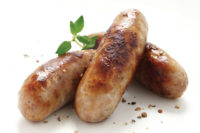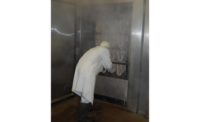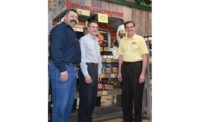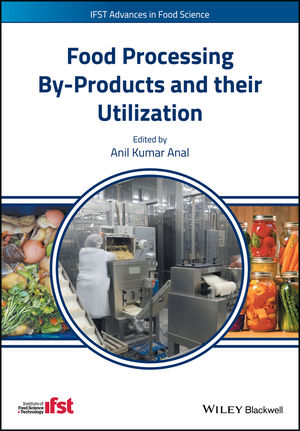 The smokehouse is the heart of any cured-meats operation, and so extra care must be taken to ensure that it is properly maintained and optimized. With the right settings, it can ensure that a company’s bratwursts or hams turn out just right each and every time.
The smokehouse is the heart of any cured-meats operation, and so extra care must be taken to ensure that it is properly maintained and optimized. With the right settings, it can ensure that a company’s bratwursts or hams turn out just right each and every time.
Although the size of the oven and the airflow are important features, it is important to consider the accessories as well, as they can greatly improve the product quality. Rick Reams, owner of RJ’s Meats & Groceries in Hudson, Wis., says that he switched from using sawdust in his smokehouse to wood pellets last year, and the results have been extremely positive. The old system dropped sawdust on a hot plate, and a product like his summer sausage would require the plate to heat up to 500 degrees for nine or 10 hours of smoke. The wood pellet smoke generator, which is attached directly to the smokehouse’s microprocessor, is more efficient.
“It consumes a lot less electricity, and I believe the smoke flavor is better,” he says. “We’ve actually shortened our smoking time in the process with that generator.”
Reams adds that it is easy to switch wood pellets for each product. He can quickly change from all hickory pellets to all apple or use a blend of wood pellets for a more customized smoke flavoring.
RJ’s Meats has two smokehouses. The larger of the two, which Reams calls his workhorse, has a 500-pound capacity and cooks all the company’s hams, sausages, bacon and other cured products. The second, smaller one is used specifically for jerky and roasting pigs. Unlike the workhorse, the smaller unit does not have a microprocessor.
“Each time the batch is going to be just a little bit different, because I might not have everything just right,” he says of that unit. “But with the microprocessor [in the workhorse], it hits it spot-on each time.”
Reams also has a steam generator on the large smokehouse, so the link sausages and similar products are finished with a steam-cook process.
“That kind of duplicates the old days when [sausage makers] would smoke sausages and finish cooking them in a water bath,” he notes. “That helps improve our yield and the product, too. We have a plumper, juicier product for the customer.”
New technologies have made it easier than ever to monitor the progress of a smokehouse and make adjustments if necessary, day or night. New equipment is compatible with the latest smartphones, so operators can connect to their smokehouse via an app, even if they are at home or out of town.
Though the latest smokehouse controls regulate the oven’s humidity, Reams notes that the humidity outdoors can still affect the products. For that reason, he runs some products that have longer cook cycles at night, when the humidity is more even.
Larger smokehouses can hold multiple trucks of product, but Reams recommends keeping the capacity steady. One truckload of hot dogs will require a different cycle than two trucks, because the humidity and airflow will be different. He also recommends loading the smoke trucks evenly.
“You don’t want it lopsided with everything jammed into a corner,” he says. “You want that air and heat moving evenly, so you have to have your smoke truck loaded evenly as well.”










